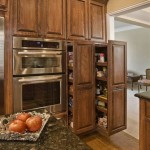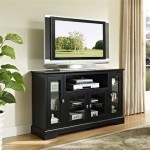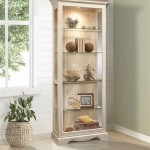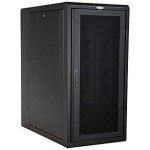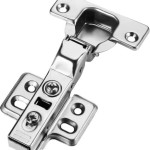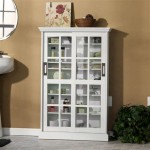Built-In Under Cabinet Microwaves: A Comprehensive Guide
The built-in under cabinet microwave has become a popular appliance in modern kitchens, offering a space-saving and aesthetically pleasing alternative to countertop models. This type of microwave is designed to be installed beneath a kitchen cabinet, freeing up valuable counter space and contributing to a more streamlined and organized kitchen environment. Understanding the features, benefits, installation process, and maintenance requirements of under cabinet microwaves is crucial for homeowners considering this upgrade.
The appeal of an under cabinet microwave extends beyond mere space conservation. It integrates seamlessly into the kitchen’s design, complementing the overall aesthetic. By eliminating clutter from the countertops, the kitchen appears larger and more inviting. Functionally, it provides convenient access to microwaved food without obstructing workspace. The installation process, while typically straightforward, requires careful planning and consideration of the existing kitchen layout and electrical infrastructure.
Space Optimization and Kitchen Design
The primary advantage of a built-in under cabinet microwave lies in its space-saving design. In kitchens with limited counter space, every inch is valuable. A countertop microwave can occupy a significant portion of this area, leaving less room for food preparation, small appliances like blenders and toasters, and other essential kitchen tasks. By moving the microwave to a location under the cabinet, homeowners reclaim this valuable space, making the kitchen more efficient and functional.
Beyond functionality, under cabinet microwaves significantly enhance the visual appeal of the kitchen. They create a cleaner, more organized look by concealing the appliance and preventing it from dominating the countertop. This integration contributes to a more cohesive and streamlined design aesthetic. Different models offer various finishes, such as stainless steel, black, white, and custom colors, allowing homeowners to select an appliance that seamlessly blends with their existing cabinetry and kitchen décor.
Manufacturers have recognized the demand for design versatility and now offer a wide range of under cabinet microwave models to suit various kitchen styles. Some units feature sleek, modern designs with minimalist controls, while others incorporate classic elements that complement traditional kitchen settings. The ability to choose a microwave that aligns with the overall design scheme is a significant advantage for homeowners seeking to create a cohesive and visually appealing kitchen.
The placement of the microwave under the cabinet also contributes to better ergonomics. By positioning the appliance at a slightly higher level than a countertop model, it can be easier to access and operate, especially for individuals with mobility limitations. This elevated position reduces the need to bend over excessively, making it more comfortable to retrieve items from the microwave.
Installation Considerations and Requirements
Installing a built-in under cabinet microwave requires careful planning and attention to detail to ensure proper fit, functionality, and safety. The first step is to accurately measure the available space under the cabinet where the microwave will be installed. It's essential to verify that the dimensions of the microwave unit are compatible with the available space, taking into account any necessary clearances for ventilation and access to electrical outlets.
Most under cabinet microwaves require a dedicated electrical circuit to provide adequate power. It is crucial to check the microwave's power requirements and ensure that the existing electrical infrastructure is sufficient to handle the load. If the existing circuit is not adequate, it may be necessary to hire a qualified electrician to install a new circuit to meet the microwave's power demands.
Ventilation is another critical consideration. Microwaves generate heat during operation, and proper ventilation is essential to prevent overheating and ensure the longevity of the appliance. Some under cabinet microwaves are designed with built-in ventilation systems, while others may require additional venting to the outside of the house. The installation instructions provided by the manufacturer will specify the recommended ventilation requirements for the particular model.
The installation process typically involves mounting a bracket or support system to the underside of the cabinet. This bracket provides a secure base for the microwave and ensures that it is properly supported. The installation instructions will provide detailed guidance on how to properly install the bracket and secure the microwave to it. It's essential to follow these instructions carefully to avoid damaging the microwave or the cabinet.
Depending on the model, some under cabinet microwaves may require professional installation. If you are not comfortable with electrical work or structural modifications, it is recommended to hire a qualified installer to ensure that the microwave is installed safely and correctly. Professional installers have the expertise and tools necessary to handle any challenges that may arise during the installation process.
Before finalizing the installation, it's crucial to test the microwave to ensure that it is functioning properly. This includes verifying that the turntable is rotating, the heating elements are working correctly, and all of the controls are functioning as expected. If any issues are detected, it is important to address them immediately to prevent further damage to the microwave or the surrounding environment.
Features, Functionality, and Maintenance
Built-in under cabinet microwaves offer a range of features and functionalities to cater to diverse cooking needs. These features enhance the convenience and efficiency of food preparation, making them a valuable addition to any kitchen. Understanding these features is important when selecting the right model for your individual needs.
Many under cabinet microwaves come equipped with pre-programmed cooking cycles that automate the process of cooking common food items, such as popcorn, vegetables, and beverages. These pre-programmed cycles eliminate the guesswork associated with determining the appropriate cooking time and power level, ensuring consistent and predictable results. Some models even allow users to customize and save their own preferred cooking cycles for frequently prepared dishes.
Sensor cooking technology is another advanced feature found in many under cabinet microwaves. This technology uses sensors to detect the moisture and humidity levels inside the microwave, automatically adjusting the cooking time and power level to ensure that food is cooked evenly and thoroughly. Sensor cooking helps prevent overcooking or undercooking, resulting in more palatable and enjoyable meals.
Convection cooking functionality is also available in some under cabinet microwave models. Convection cooking uses a fan to circulate hot air throughout the microwave cavity, creating a more even cooking environment. This is particularly beneficial for baking and roasting, as it helps to achieve browning and crisping that is typically not possible with traditional microwave heating. Convection microwave ovens offer increased versatility and can be used to prepare a wider range of dishes than standard microwave ovens.
Maintaining a built-in under cabinet microwave is essential to ensure its longevity and optimal performance. Regular cleaning is necessary to prevent the buildup of food splatters and grease, which can affect the microwave's efficiency and potentially lead to unpleasant odors. The interior of the microwave should be wiped down regularly with a damp cloth or sponge, and any spills or splatters should be cleaned up immediately.
The turntable, if present, should also be cleaned regularly to remove any food debris or residue. Some turntables are dishwasher-safe, while others may need to be hand-washed. Refer to the manufacturer's instructions for specific cleaning recommendations. Additionally, the exterior of the microwave should be cleaned with a mild detergent and a soft cloth to remove any fingerprints or smudges.
It is also advisable to periodically inspect the microwave for any signs of damage or wear. Check the door seal to ensure that it is intact and properly sealing the microwave cavity. Inspect the power cord for any signs of fraying or damage. If any issues are detected, it is important to address them promptly to prevent further damage or safety hazards. In some cases, it may be necessary to consult a qualified technician to repair or replace damaged components.
Proper usage is also key to maintaining an under cabinet microwave. Always use microwave-safe containers and cookware, and avoid using metal objects, which can cause sparks and damage the microwave. Follow the manufacturer's instructions for recommended cooking times and power levels, and avoid overcooking food, which can lead to splattering and difficult-to-clean messes. With proper care and maintenance, a built-in under cabinet microwave can provide years of reliable service and enhance the functionality and appearance of your kitchen.

Oven Microwave Cabinet Aokextras

Base Microwave Cabinet Homecrest Specialty Products

Built In Microwave Shelf Cabinet For Easy Access

The Best Built In Microwave Cabinet Height Green With Decor

Kitchen Microwave Cabinet Ideas

Built In Microwave Shelf Cabinet For Easy Access

What Is A Built In Microwave Kitchenaid

Base Built In Microwave Cabinet Specialty Products Kemper Cabinets

Mmmf6030pz By Maytag Over The Range Flush Built In Microwave 1 Cu Ft National Appliance Warehouse

Tall Built In Microwave Cabinet Appliance Cabinets Diamond At Lowes

